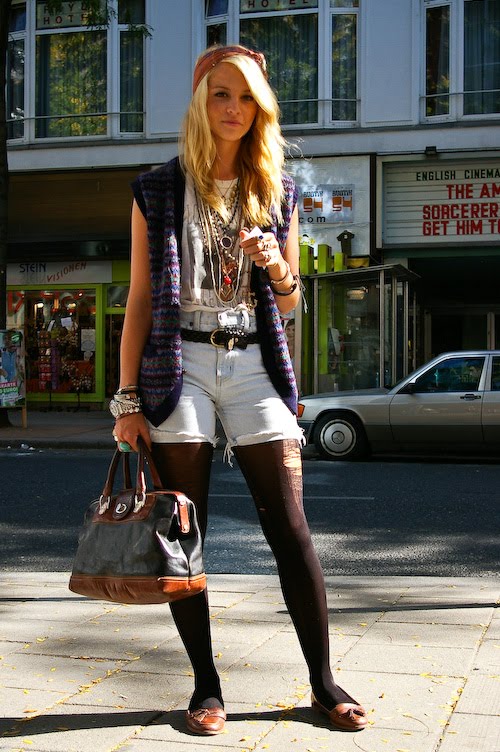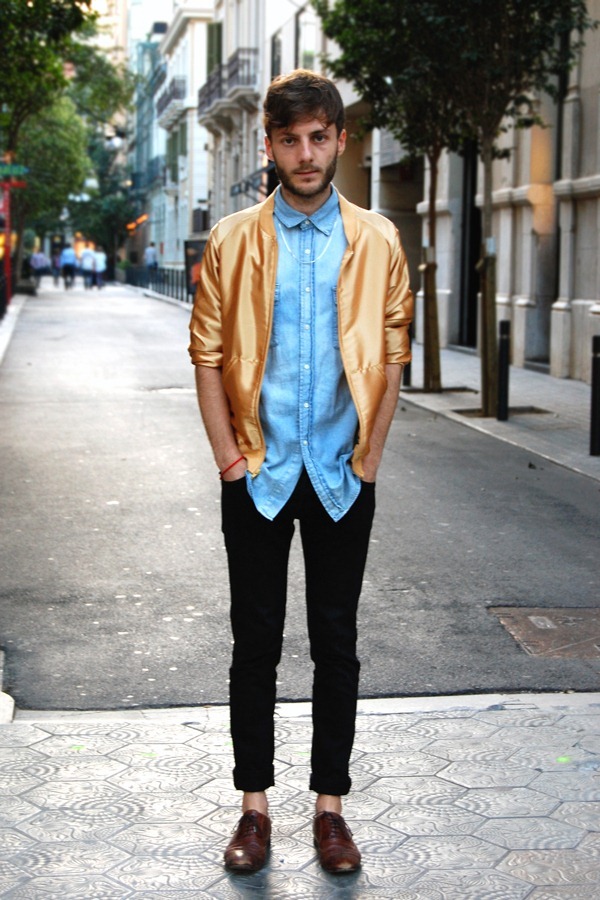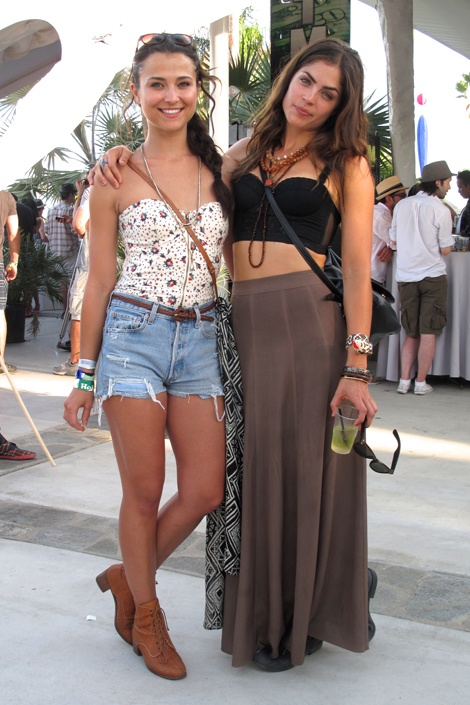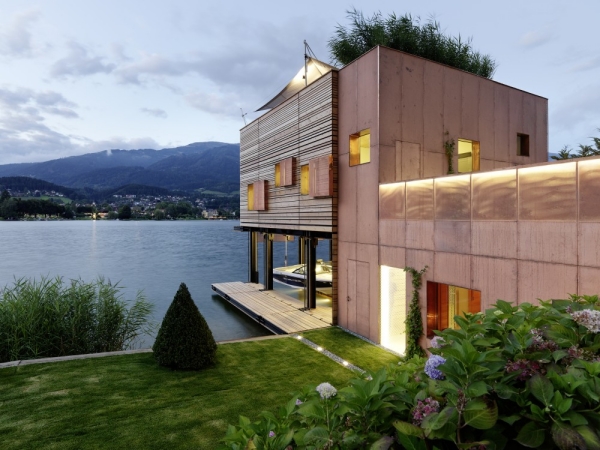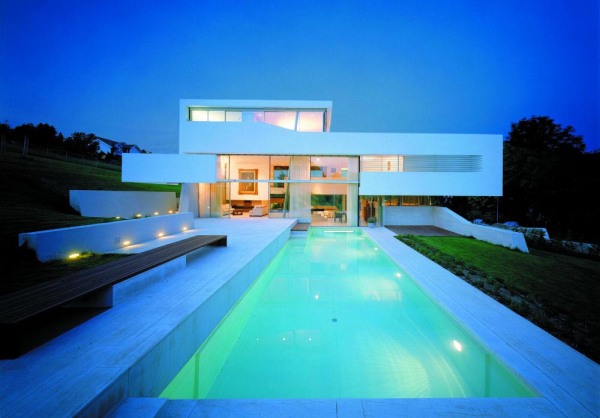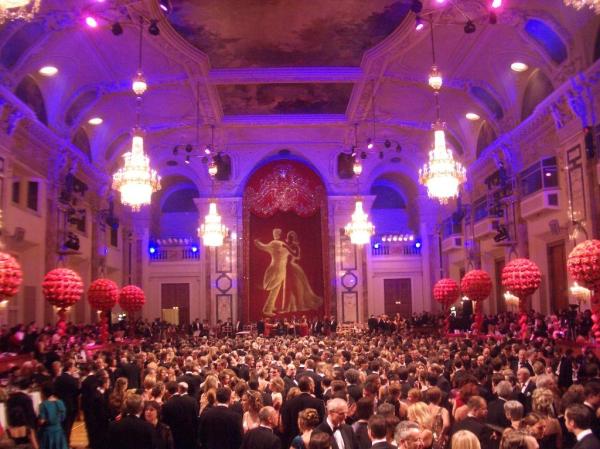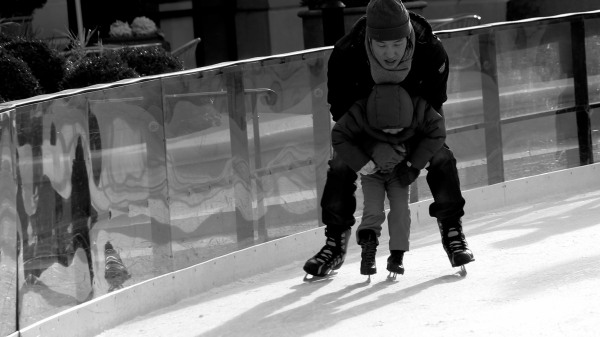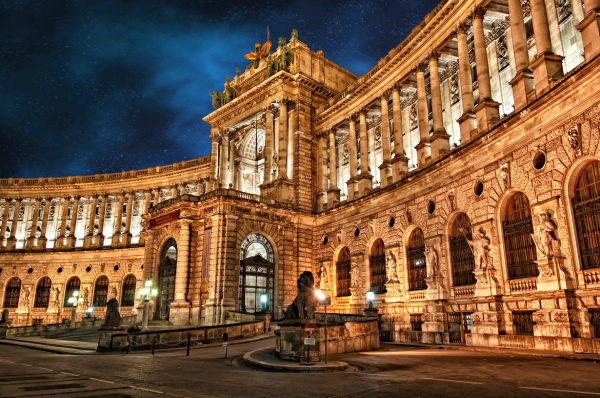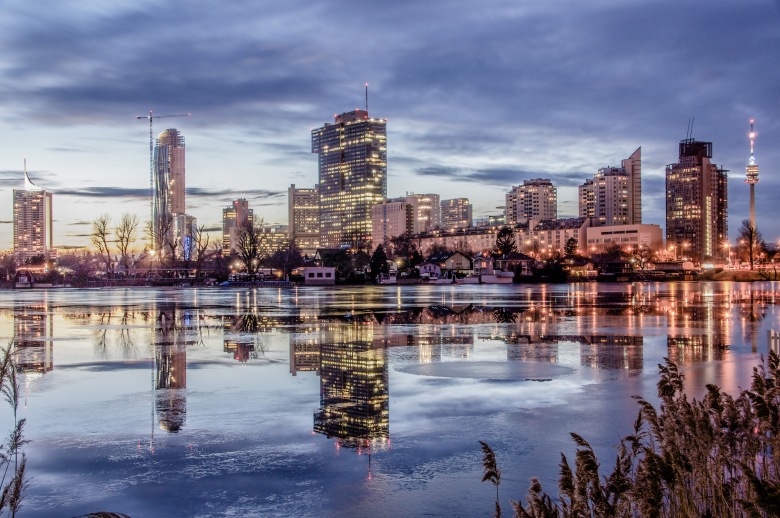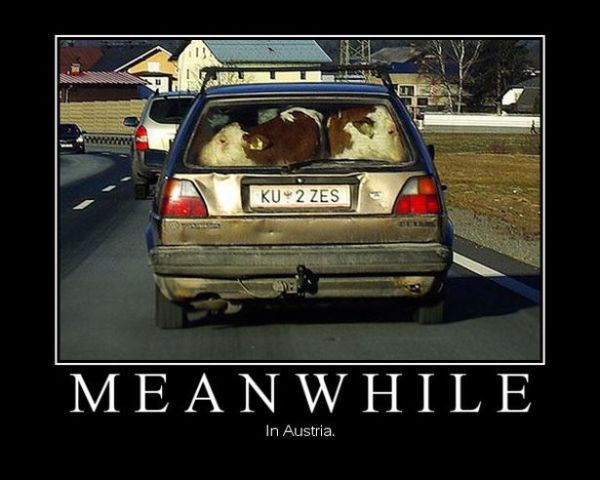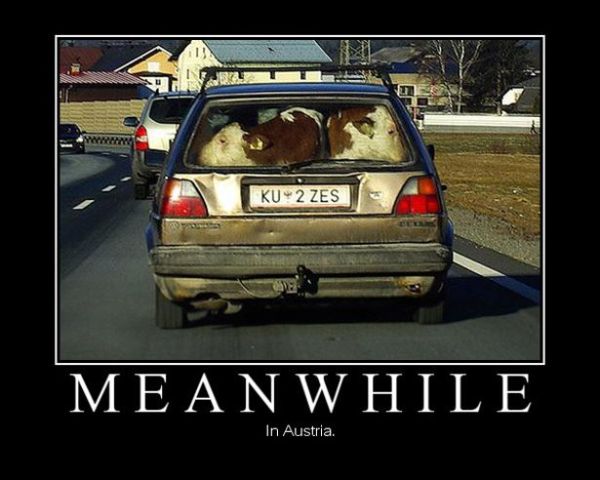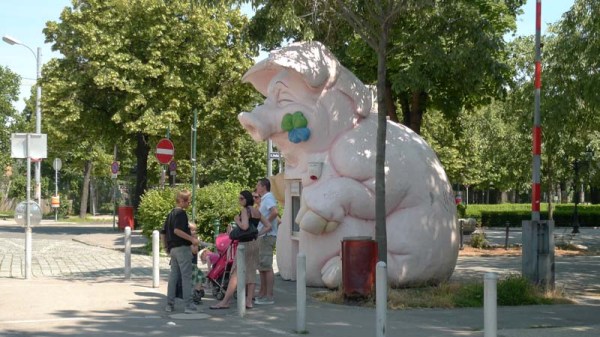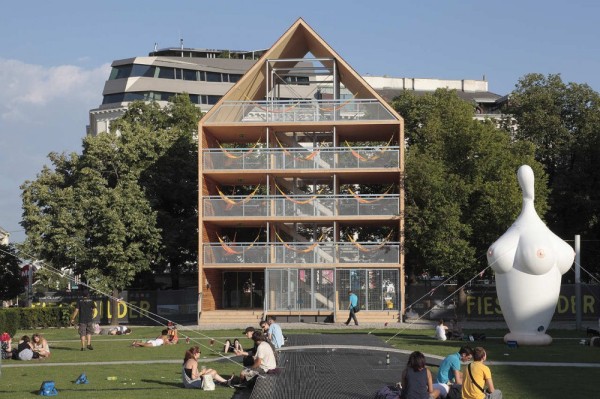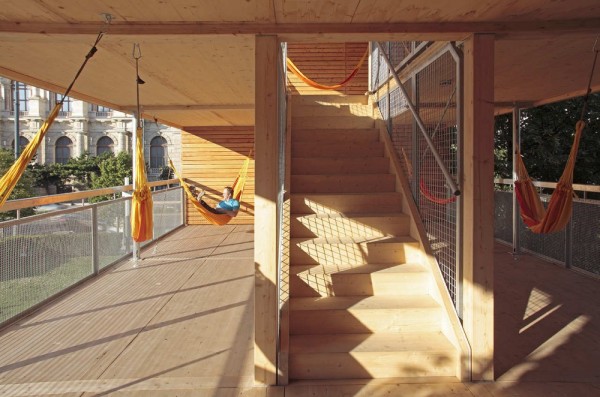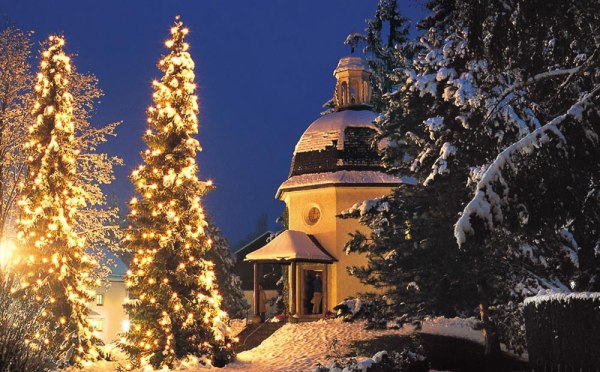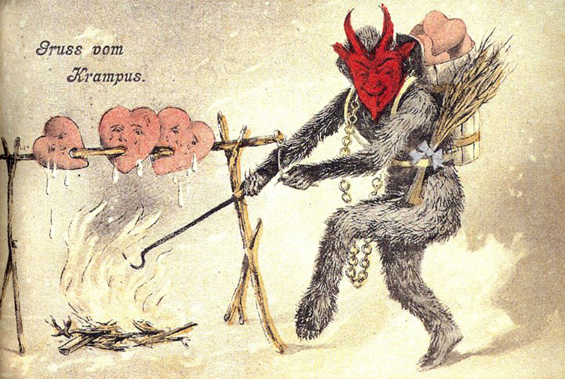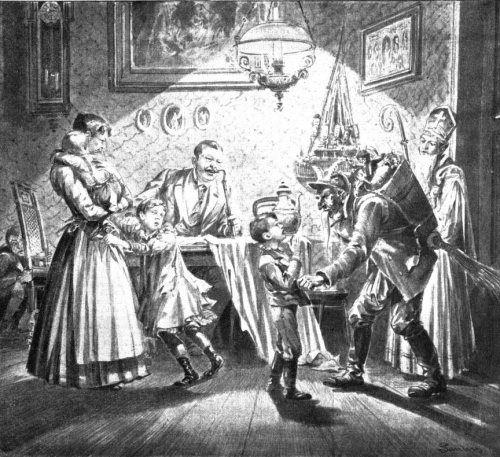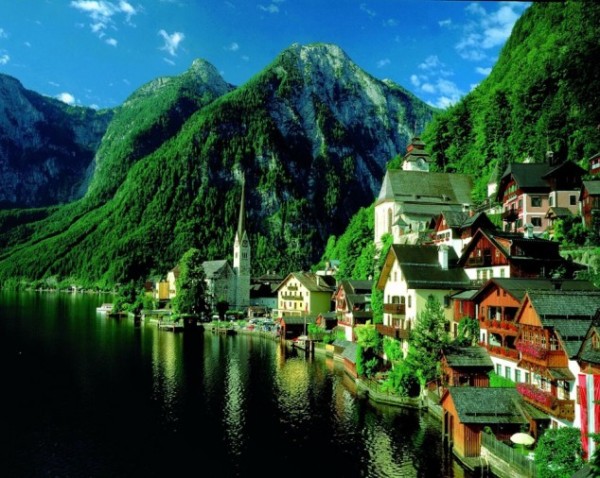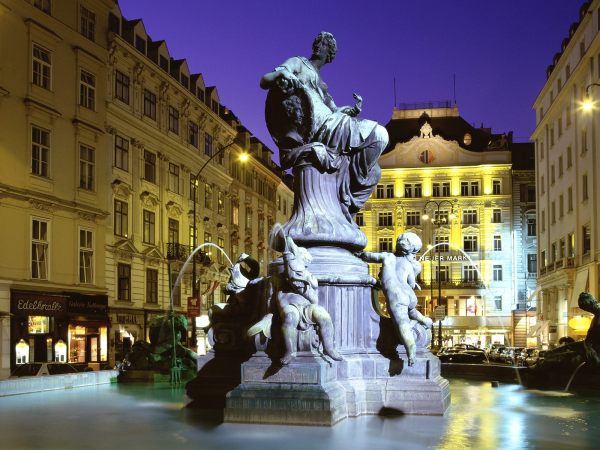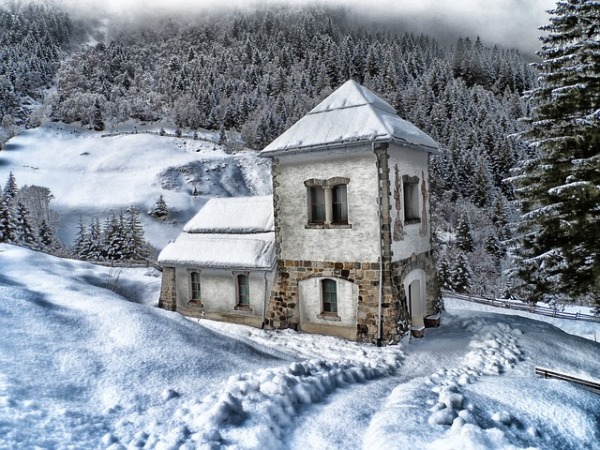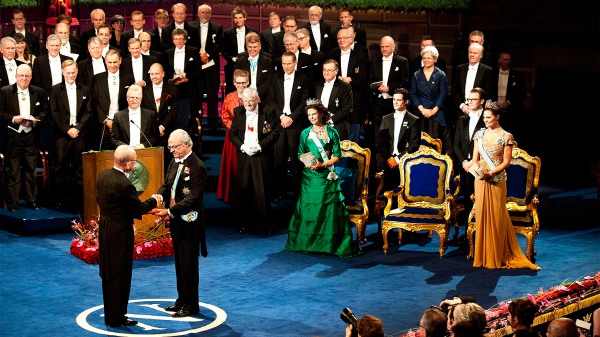Did you know that during this past New Year’s concert popular designer Vivienne Westwood collaborated with the famous Vienna State ballet to design the costumes for the show and that there are whispers going around Vienna that she might be back soon to provide her creative designs for more shows of the stylish ballet :).
Category Archives: Vienna
Luxury in the Clouds – The New Austrian Airlines Business Class
An outstanding flight experience with the brand new Austrian Business Class seat featuring:
- a horizontal full-flat bed almost two meters in length
- an innovative air cushion system providing greatest possible comfort
- an integrated massage function
- the latest on board entertainment system
A classy new cabin design with a touch of Austria
The Austrian Airlines colors of white, red and light blue dominate the design and have a calming and stress-reducing effect. The Business Class cabin has been furnished with highly luxurious material. We know what we’re going to fly next ;).
Photo of the Day
Austrian Market Economy & the E.U. – Quick Intro
Austria is one of the 12 richest countries in the world in terms of GDP (Gross domestic product) per capita, has a well-developed social market economy, and a high standard of living. Until the 1980s, many of Austria’s largest industry firms were nationalised; in recent years, however, privatisation has reduced state holdings to a level comparable to other European economies. Labour movements are particularly strong in Austria and have large influence on labour politics. Next to a highly developed industry, international tourism is the most important part of the national economy.
Germany has historically been the main trading partner of Austria, making it vulnerable to rapid changes in the German economy. However, since Austria became a member state of the European Union it has gained closer ties to other European Union economies, reducing its economic dependence on Germany. In addition, membership in the EU has drawn an influx of foreign investors attracted by Austria’s access to the single European market and proximity to the aspiring economies of the European Union. Growth in GDP accelerated in recent years and reached 3.3% in 2006.
In 2004 Austria was the fourth richest country within the European Union, having a GDP (PPP) per capita of approximately € 27’666, with Luxembourg, Ireland, and Netherlands leading the list.
Vienna was ranked the fifth richest NUTS-2 region within Europe (see Economy of Europe) with GDP reaching € 38’632 per capita, just behind Inner London, Luxembourg, Brussels-Capital Region and Hamburg.
Growth has been steady in recent years 2002-2006 pending between 1 and 3.3 %.
TTMAA FAN SPECIAL OFFER:
Choose your gift and Swarovski will include a free gift bag and greeting card!
Austrian Street Style – Part 1
VIBRANT VIENNA
Splendid Austrian Mansions
Austria’s green technology as well as talented pool of architects and designers make Austria an interesting investment when it comes to real estate using the most advanced technological and environmental friendly house constructing tools.
Check out some of our favorite breathtaking Austrian mansions, owned by celebrities, business people or families that have inherited them.
Which one is your favorite :)?? Leave a comment in the comment section down below!
VIBRANT VIENNA – A photo tour
Ever wondered what makes VIENNA so special and why it is continuously voted as NUMBER 1 city to live in, in the world?
Even we locals and/or people who grew up in Vienna, are continuously fascinated and sucked in by the beauty of the City of Music, as well as amazed by all the many different layers the city has to offer. The Viennese say that, “you can spend your whole life in Vienna and never really know all of it’s mysterious secrets :).” This is a saying we know to be true. But that is another reason why we love Vienna, we love to be surprised. Do you?
Check out our beautiful picture tour of the capital city of Austria.
 Photo Credit: http://travel.nationalgeographic.com/travel/city-guides/vienna-photos-2/#/vienna-hundertwasser-haus_2702_600x450.jpg
Photo Credit: http://travel.nationalgeographic.com/travel/city-guides/vienna-photos-2/#/vienna-hundertwasser-haus_2702_600x450.jpg
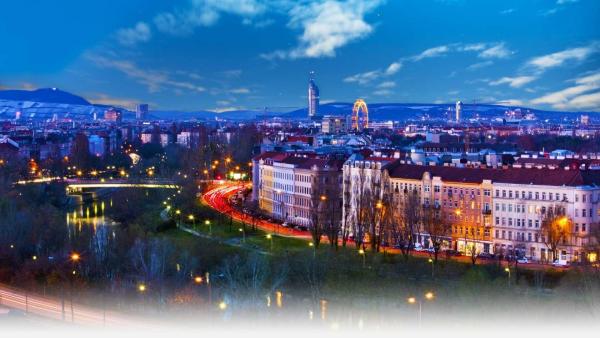 Photo Credit: http://gencept.com/vienna-timelapse-and-hyperlapse-photography-video
Photo Credit: http://gencept.com/vienna-timelapse-and-hyperlapse-photography-video
Photo credits: http://christianmari.wordpress.com/2012/03/01/vienna-street-photography-2/
Photo Credit: http://www.theweddingnotebook.com/tag/acapella-photography/
Photo Credit: Peter Talke Photography
Photo Credits: Nadine Heller: http://www.flickr.com/photos/57816136@N03/6615593333/
Love the pictures & maybe want to see your own pictures of Austria on our site?! Then SUBMIT your unique shots here.
A Modern View of Vienna
Funny Friday – Austrian Standup Comedy ;)
Oh! You funny Austria :)!
Austria is not only beautiful, graceful and old-worldish; but can also be funny, quirky and – well, simply crazy :).
Check out this week’s unique pictures from places all over Austria:
Which pic did you like the best? We would love to read your choice in the comment section down below.
And – as always, if you like our stuff and this site, we’d totally appreciate it if you could share it with your friends and loved ones.
Danke & Schönes Wochenende!!
A House Filled With Hammocks
Austria has taken the art of relaxation to another level for its residents with a hammock-filled public art installation entitled Flederhaus (Bat House) right in the capital city Vienna :)!
The True Story About the The Christmas Carol: SILENT NIGHT
Did you know that the beautiful Christmas Carol ‘Silent Night’ originated in Austria :)?
From the small village of Oberndorf near Salzburg, the world’s most famous Christmas carol has spread around the globe. Learn about the humble and most charming story of its creation.
Without this song, Christmas would only be half as beautiful. Which is why Oberndorf is filled with such an inimitable Advent atmosphere, with the world-famous Christmas song “Silent Night!” taking center stage. Here is the original German version of ‘Silent Night’ (Stille Nacht) sung by the famous Vienna Boys Choir:
Nothing beats standing before the „Silent Night, Holy Night“ memorial chapel in Oberndorf on Christmas Eve and joining hundreds from all over the world in the singing of the Christmas carol though! You’ll feel a chill when you join the chorus singing a song which spread from this very spot to the entire world!
The local priest, Josef Mohr, wrote the words in 1816 and Franz Xaver Gruber composed the famous tune two years later. Near the memorial chapel and the idyllic Christmas market on Silent Night Square, you’ll find the Gruber-Mohr memorial and an exhibit about the history of “Silent Night” in the local museum.
Oberndorf is about ½ hour by car/bus outside of Salzburg and you’ll want to take a photo before the small chapel. Further villages like Wagrain, Mariapfarr and Hallein host Silent Night museums, sights and special events as they were places of activity of the composers.
Greetings from Krampus
Krampus is an Austrian tradition, hence the writing “Gruß vom Krampus” which is German and translates to “Greetings from Krampus”.
The legend of Krampus, which predates Christianity, started in the Alpine region of Europe, specifically, the Austrian Alps. The Krampus tale gradually spread throughout Austria and into neighboring countries including Germany, Hungary, Slovenia, northern Italy and Croatia.
It is an old tradition to send above card or similar ones anonymously to a friend pranking him/her or telling him something you wouldn’t want to tell in person. He is the companion of St. Nicholas and usually many guys dress up as Krampus and some older guys dress up as St. Nicholas’ and roam the streets on the evening of Dec 5th in almost every town in Austria.
Krampus usually frighten kids by looking scary (and let me tell you, they for sure do *brrr*) and hitting some of them with a wicker. Kids are being asked by St. Nicholas whether they did behave well in the past year and then receive small gift’s in red bags that they can open next day in the morning.
Living in America for the past 8 years I realized the fact that American kids never really seem to have to ‘earn‘ a Christmas gift. And this concept might be totally weird to you if you are coming from another country, but in Austria we kids have to literally earn our Christmas gifts and let me tell you, it is not an easy task to accomplish. Why? Because of the evil Krampus, the Demon of Christmas. Read on ;).
As a kid growing up in Austria you better make sure to not have been naughty over the course of the past year. Why? Because naughty Austrian children are annually threatened with a Pagan Fertility Demon from deepest, darkest hell — a goat-legged, horned satyr who won’t leave coal as much as he will beat them savagely for their misdeeds and then drag them to hell (it’s somewhat more effective). I get goosebumps just thinking about him even now, as an adult.
So, let’s get to know Mr. Krampus, the Child-Eating Holiday Hell-beast, shall we? Here are 7 things you want to know about this crazy Austrian tradition ;).
1) Krampus Is Older Than Jesus
Krampus (from the German “Krampen,” or “Claw,” or “Giddy Child Murderer”) was born of a pre-Christian, Alpine Pagan tradition, and has been described as a “boozy goat-horned menace that whips children around Europe.” Krampus can also be identified by his matted-black hair, Gene Simmons-like tongue, and cloven hooves. He also sports a large wicker basket on his back, filled to the brim with thorny, unbreakable birch sticks. What are the sticks used for? Oh, we’re getting to that! WE’RE GETTING TO THAT!
2) Austrian Krampus Tradition Explained
As a young Austrian child you may reach an age where you don’t believe this Krampus shit anymore. Oh, who am I kidding? You don’t. You will always feel the fear on December the 5th, even if you live abroad. On December 5th, a herd of Austrian men dress up as Krampus, show up in front of your bedroom window, in full-Satan regalia, rattling rusty chains and large bells and screaming at you…every (!) December 5th. And while you’re pissing down your lederhosen, your parents then let them in the house, asking if you have been a naughty child or not, if you have, you get spanked; and afterwards your parents sit down with the Krampus and Nikolo to have a few drinks (ok. not always).
Known as “Krampusnacht: Night of the Krampus”, the Christmas Demons invade also almost every single Austrian town and parade through the streets, displaying their horrifying masks and torture instruments.
3) Krampus Has Mastered Many Forms of Punishment
When it comes to punishment, Krampus doesn’t stop at mere birch rods. That would be too kind. Under the careful tutelage of Pinhead and various Cenobites, Krampus’ retribution repertoire grew ten-fold over the centuries. According to a series of very popular 1800s postcards, Krampus enjoyed: ripping pigtails out, leading children off a cliff, sadistic ear-pulling, putting pre-teens in shackles, forcing children to beg for mercy, and throwing youngsters on an Express Train to The Lake of Fire (making no local stops). And then there’s my favorite: drowning children to death in ink and fishing out the corpse with a pitchfork. It’s like The Grinch meets Hostel. So be aware if you find yourself in Austria on December, the 5th :).
4) Krampus Makes a Terrible Video Game Boss
Krampus’ made a brief cameo in the arcade game CarnEvil — better known as that shitty first-person shooter with the broken trigger collecting dust at your local Multiplex game lobby. While he looks more like a Santa/Krampus/Rudolph hybrid, and spouts off terrifying bon mots such as “I’ll stuff YOUR stocking!”, the pixilated poser can’t hold a candle to the real, eye-gouging legend of old. But it’s another pretty good example of America taking something foreign, and making it less fun or interesting.
5) Krampus Brought Nazis and Christians Together For a Common Purpose
It’s true! If it’s one thing both Hitler and Christian fundamentalists can agree on, it’s hating Krampus. Not since Mel Gibson has there been such a confluence of anti-Semitism and religious fervor. A 1934 New York Times article headlined “Krampus Disliked in Facist Austria” declared Krampus “Strictly Verboten”: police were ordered to “arrest the devil on sight.” He was even labeled – and I am not kidding you – “the work of wicked Social Democrats.”
But the Krampus tradition survived, as it did during the Inquisition when you’d be put to death by the Catholic Church for impersonating the devil. The New York Times goes on to call Krampus “harmless,” tell of his bringing “candies and delights” to children and remarks that “Krampus balls are the first sign of Christmas jollification.” Even in 1934, The New York Times did not actually check its sources.
6) Krampus Has More Terrible, Evil Brothers
In case you might wonder, Krampus is not the only Holiday Demon in Europe. Iceland folklore cites “13 Santa figures, known as the Jolasveinar,” each more terrible than the next. Like, there’s Hurdaskellir, or “The Door Slammer.” Then there are vicious elves named “The Window Peeper,” “The Sausage Snatcher,” and “The Doorway Sniffer.” Not in my most scary nightmares can I imagine what any of these entail. There is also Pelzebock or Pelznickel in southern Germany, and Gumphinckel in Silesia. In Hungary, there is Krampusz, and in Switzerland, Schmutzli.
7) In case you still want to know more about Krampus, check out the following links:
http://www.kctv5.com/story/24246425/forget-santa-you-better-watch-out-for-krampus http://krampus.com/ http://www.etsy.com/search_results.php?search_query=krampus&search_type=handmade http://www.amazon.com/Krampus-Devil-Christmas-Monte-Beauchamp/dp/0867197471/ref=sr_1_1?s=books&ie=UTF8&qid=1292543449&sr=1-1Gruss vom Krampus & Merry Christmas – & remember, only if you have been a good child this year ;)!
Austria’s Christmas Spirit
It’s ‘Christkindl-markt’ time in Austria!!
Can you recognize some of the Christkindlmaerkte and where they are at :)? If you have some pictures of your own, or stories about Austria’s amazing ‘Christkindlmarkt Culture,’ then don’t hesitate to post them in the comment section below and we would love to feature them on our facebook page and in one of the next upcoming posts about Christmas in Austria. Stay tuned!
Alles Liebe,
~Your TTMAA Team
Fantastic Austria
Hi TTMAA fans,
NEW CONTEST AND THE PRIZE FOR THE WINNER IS AWESOME :)!!!
With the Christmas season fast approaching we thought we are going to start a new contest and call it Fantastic Austria.
Below you can see 10 pictures of fantastic things or places in Austria and we want you to guess and tell us via the comment section below, where in Austria they are or what they might represent or are all about ;). Feel free to also ask us or each other for help in the comment section below and we might give you a hint.
If you are the FIRST one to guess 9 out of the 10 correct, we will reward you with…*drum-roll please* a customized T-Shirt that has our TTMAA logo on it!!! YAYYY!!! So, let the guessing begin:
NOBEL PRIZE AND THE UNIVERSITY OF VIENNA
The University of Vienna has a long history for being known as a prestigious research institution in Austria. And so far, nine scientists who are affiliated to the University of Vienna through either teaching or research have been awarded the Nobel Prize, the most famous scientific award there is.
Robert Bárány, Otology (1876 Vienna – 1936 Uppsala)
1914: Nobel Prize for Medicine
Julius Wagner-Jauregg, Psychiatry (1857 Wels – 1940 Vienna)
1927: Nobel Prize for Medicine
Hans Fischer, Chemistry (1881 Höchst a.M. – München 1945)
1930: Nobel Prize for Chemistry
Karl Landsteiner, Immunology (1868 Vienna – 1943 New York)
1930: Nobel Prize for Medicine
Erwin Schrödinger, Physics (1887 Vienna – 1961 Vienna)
1933: Nobel Prize for Physics
Viktor Franz Hess, Physics (1883 Schloß Waldstein – 1964 Mount Vernon U.S.A.)
1936: Nobel Prize for Physics
Otto Loewi, Physiology and Pharmacology (1873 Frankfurt a.M. – 1961 New York)
1936: Nobel Prize for Medicine
Konrad Lorenz, Biology (1903 Vienna – 1989 Vienna)
1973: Nobel Prize for Medicine
Friedrich A. von Hayek, Economics (1899 Vienna – 1992 Freiburg im Breisgau)
1974: Nobel Memorial Award for Business, Economics, and Statistics
ZAHA HADID’S REDESIGN FOR THE UNIVERSITY OF VIENNA COMPLETED
The construction and the redesign that part of the University of Vienna underwent these past few months is completed and we think the results look pretty dang good ;). We can see in the design that the University of Vienna is working towards making its name in Europe in becoming one of the best research institutions on the continent.
Like or not like this new modern design? Comment in the comment section below.
ICONIC ITINERARIES
5 Perfect Days in Austria
Three Days in the City and Two in the Country
Sure, we all dream of the day when we’ll have weeks on end to devote to the vacation of our dreams . . . but really, who has the time? In this installment of our Iconic Itineraries series, we give you the perfect five-day trip in which we’ve paired some of our favorite cities with the most beautiful countryside destinations around (and you can buy the itinerary with just a single phone call). So whether you’re traveling for business or pleasure, it’s worth remembering: Just because a trip is short doesn’t mean it can’t be the trip of a lifetime.
To read the full article on this iconic itinerary, go to: http://www.cntraveler.com/iconic-trips/2013/11/vienna-austria-travel-guide


















